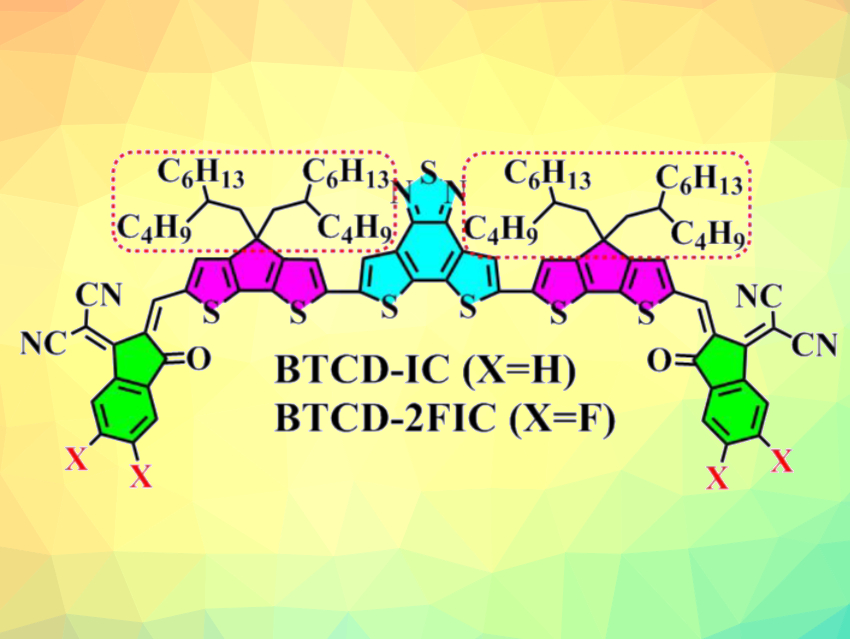The active layer in organic solar cells contains donor and acceptor materials. Unfused-ring acceptors (UFAs) could be useful in such cells due to their easy synthesis, low cost, and promising device performance. However, low open-circuit voltages (Voc) and modest fill factors (FF, a measure of the quality of a solar cell) still limit the performance of unfused-ring acceptors.
Feiyan Wu, Lie Chen, Nanchang University, China, Changduk Yang, Ulsan National Institute of Science and Technology (UNIST), Republic of Korea, and colleagues have designed and synthesized two new UFAs, called BTCD-IC and BTCD-2FIC (pictured). The two compounds have the same electron-withdrawing central core, combined with cyclopentadithiophene units with different substituents. These building blocks were coupled using a Knoevenagel condensation. The UFAs exhibit strong and broad light absorption in the wavelength range of 300–850 nm due to an enhanced intramolecular charge transfer.
Compared with BTCD-IC, BTCD-2FIC showed improved properties such as a higher charge mobility, more ordered molecular stacking, and better film morphology due to the effects of the F substituents. When paired with PBDB-T (poly[(2,6-(4,8-bis(5-(2-ethylhexyl)thiophen-2-yl)benzo[1,2-b:4,5-b’]dithiophene)-co-(1,3-di(5-thiophene-2-yl)-5,7-bis(2-ethylhexyl)benzo[1,2-c:4,5-c’]-dithiophene-4,8-dione)]) as a polymer donor, a BTCD-2FIC-based device achieved a superior power conversion efficiency of 11.32 %, with a high Voc of 0.85 V and a high FF of 73 %. The results show that using an electron-withdrawing central-core unit in UFAs can be useful in the development of high-performance organic solar cells.
- Exploiting Novel Unfused‐Ring Acceptor for Efficient Organic Solar Cells with Record Open‐Circuit Voltage and Fill Factor,
Lie Chen, Zuoji Liu, Qilong Mao, Jing Wang, Feiyan Wu, Dan Zhou, Yujun Cheng, Shaorong Huang, Bin Huang, Changduk Yang,
ChemSusChem 2021.
https://doi.org/10.1002/cssc.202102563



